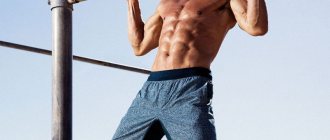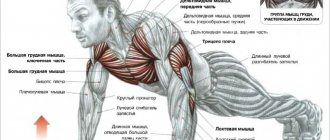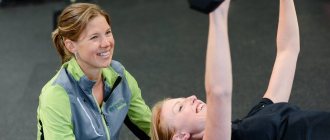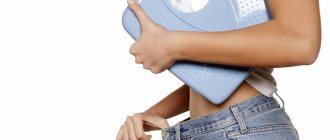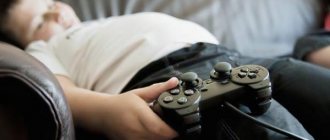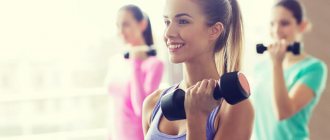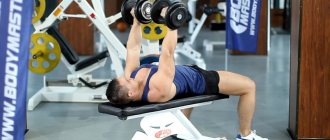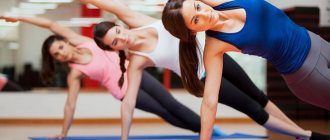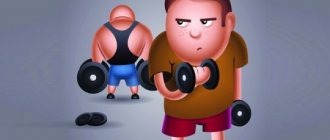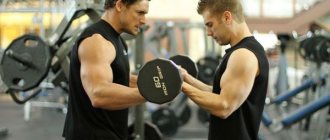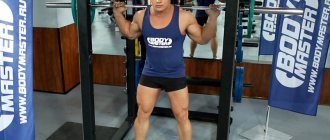Whether you exercise regularly or not, staying flexible is essential to the well-being of your body. Stretching prevents muscle injuries, relieves back pain, improves athletic performance, and reduces brain stress. It will keep your muscles flexible as you get older, and if you exercise regularly, it will protect your body from overuse. Moreover, stretching can be done even without leaving home.
Don't worry, you don't have to stretch until your muscles feel sore for noticeable results. Gentle and light stretching after your workout, during a break at work or before you go to bed is very beneficial.
Continue reading why and how to do stretching exercises for beginners...
Useful properties of stretching as a form of fitness
Stretching prevents injury by lengthening the soft muscle tissue surrounding your joints. Both excessive exercise and a sedentary lifestyle shrink these tissues, limiting the range of motion in the joints. A limited range of motion makes it impossible to use your full muscle potential and, more dangerously, increases the risk of injury.
The muscles that are most stressed—the hamstrings, quadriceps, calf muscles, back muscles, and hamstrings—are most vulnerable to muscle strains. To reduce the risk of pulling a muscle, make stretching those muscles part of your daily routine.
Stretching relieves back pain by making the lumbar muscles more flexible. Stretching is what improves your athletic performance by allowing you to use your muscles to their full potential.
Stretching releases tension from the muscles, which reduces physical and mental stress. A tense body becomes uncomfortable, which can lead to a number of adverse effects, including limited blood circulation and chronic back pain. Combat both the physical and mental effects of stress by stretching regularly.
Weight loss and fat burning potential
You exercise regularly and lose weight. Fantastic! It's always rewarding to see how your body changes in response to your blood, sweat and tears in the gym. However, the faster your body changes, the more vulnerable you are to injury.
A sprained ankle or hamstring can keep you away from the gym for weeks or even months, so it's absolutely essential to stretch regularly to prevent injury. Target exactly those most commonly used muscles we talked about earlier for best results.
While yoga probably won't make you super lean, it's a great addition to any weight-loss exercise routine. Practice restorative yoga poses: child's pose (balasana) and prone warrior pose (supta virasana). Other poses, such as downward-facing dog pose (adho mukha svanasana), specifically target high-stress muscles.
Potential for toning and muscle building
A balanced ratio of length and tension improves the muscle's ability to recover. Focusing all your attention on building muscle mass and endurance will limit this ability.
The key is balance. If you prefer strength training, then stretching will improve muscle tension and increase strength. If, however, you do a lot of flexibility training without balancing it with strength training, it will simply make you weaker.
Do I need to attend group classes and what can I expect from them?
Athletes often don't do stretching exercises and lose sight of it. For example, a busy person may have trouble finding the time to do quality stretching in the beginning, or many may be too tired at the end of a workout to do any stretching. This is understandable, but it is also a recipe for injury.
Adult classes that focus on flexibility, such as yoga, can help you develop a stretching routine that you can enjoy doing. If you don't naturally tend to stretch during your regular workout, the class will keep you in shape (at least for an hour).
Stretching isn't always intuitive. While you're still a beginner, it's helpful to have an instructor walk you through every step. A good instructor will give you a fundamental understanding of technique and safety that you can use in your own practice later.
Stretching for beginners at home
Stretching for beginners is a great way to increase the body's performance, improve your appearance and get rid of many diseases. Simple plastic exercises can be easily done at home without buying unnecessary exercise equipment. The only thing you may need for home workouts is a gymnastics mat. This sports accessory will help you conduct successful and fruitful workouts. It is worth noting that without a mat it is almost impossible to carry out ballistic stretching for the splits, since often the legs slip on the floor coverings and you can get seriously injured during training.
Stretching exercises will bring many pleasant moments into your life. Women who constantly engage in this type of gymnastics can completely rid themselves of pain during menstruation, as well as restore its normal and stable cycle.
A set of stretching exercises also helps relieve back pain and restore the functioning of the cardiovascular system. This type of activity also brings a feeling of calm and tranquility. Thanks to stretching, men and women of all ages can normalize their sleep, restore their metabolism, and begin to feel 100%.
Why is flexibility so important?
Stretching is one area of fitness that we don't think about too much beyond a few exercises before or after a workout. In fact, stretching is something most of us skip because we run out of time, energy and motivation. After all, stretching doesn't burn many calories, so why bother?
Being healthy and fit isn't just about burning calories. One reason to do some flexibility exercises is the simple fact that stretched muscles will allow your joints to move through a full range of motion.
Full range of motion is where you get the most out of each exercise and, as a result, your workout.
How can tight muscles hurt your workouts?
Think about what happens when you tense any part of your body. If you have tight thigh muscles, you may not be able to do proper lunges, abdominal curls, or squats.
This means two things: you are not getting the most out of these exercises, and if you continue doing them in the same way, you may get injured.
Benefits of Stretching
Not only does stretching help you get the most out of your workout, but it can also help you feel better as you get older.
- Increased productivity and reduced risk of injury. One fact: Studies have shown that stretching doesn't help reduce soreness from your workout, so don't expect it to cure everything that's ailing you. However, maintaining enough flexibility to exercise safely is important for your overall health.
- Reduced muscle pain and improved posture
- Reducing lower back pain
- Increased blood flow and nutrients to tissues
- Improved coordination
- Relief from muscle tension
- Improved muscle recovery after exercise
- Feeling better
How to stretch?
Creating a flexibility training program is quite simple; all you need is effective exercises and knowledge of the technique of performing them.
Stretching is one of the most gentle ways to work with your body, and the best thing is that you can do it anytime, almost anywhere.
You don't need special equipment, just a little time and a set of exercises.
Some basic stretching guidelines:
- Stretch after your main workout. Research has shown that stretching before exercise does not reduce the risk of injury or soreness. In fact, stretching cold muscles can lead to injury. If your goal is to increase flexibility, it's best to stretch after a workout when your muscles are "warm and pliable."
- Stretch the muscles you worked during your workout. If you're short on time, focus on the core muscles, or the muscles that tend to be tightest: the biceps and quads, hamstrings, glutes, and chest.
- Don't bounce when performing static stretches. Hold a comfortable position until you feel a slight pull in the muscle. It won't hurt you in any way, but bouncing may cause you to dislocate a joint.
- Hold each position for 15-30 seconds to get maximum benefit.
- Stretch throughout the day. Stretching after a workout can improve flexibility, but stretching throughout the day can help you reduce tension and stress.
Stretch training
Active flexibility training will not take much time. In fact, you can achieve a full body stretch with just a few core exercises.
The exercises below are designed to stretch all major muscles.
Do them after your workout and throughout the day to reduce stress, boost happy hormone levels, and improve blood circulation.
How to stretch correctly: simple tips
Warm up before stretching. Of course, stretching exercises are a very important part of the warm-up, but they should not be its only component. Before starting a stretching program, your body must literally warm up, as connective tissue only becomes more susceptible to stretching when it is well warmed up. This will help increase muscle flexibility and elasticity, which will protect you from possible injuries during the main workout.
Experts recommend a 10-minute low-intensity aerobic session as a warm-up, but in general, the actual duration depends on the exerciser's level of fitness. For warming up, it is best to choose exercises such as jumping rope (training with a jump rope with photos and videos) or walking in place (or on a treadmill).
Stretching. When choosing stretching exercises, focus on those that target core areas of your body such as your lower back, shoulders, neck, thighs, calves and abdominals.
Hold each exercise in the program at the maximum stretch point (a feeling of discomfort along the entire length of the muscle, but not pain) for 30 to 60 seconds. Then repeat this element 3 – 4 more times and move on to stretching the next muscle group.
When should you not stretch? Stop performing a set of stretching exercises immediately if you feel a burning or tingling sensation in your limbs, dizziness, muscle spasms, or hear any clicking or crunching sounds.
Now let's get acquainted with the most effective exercises for stretching and flexibility of our entire body.
Exercises for warming up and flexibility of muscles and joints
Hamstrings
Stand on your heels with one leg straight in front of you. Keep your back straight and stretch your leg until you feel a stretch in the back. Hold the position for 30 seconds and repeat on the other side.
Ikr
Take one leg and move it back behind you, with the other leg standing straight. Press your heel into the floor as you bend your knee, feeling a stretch in your calf. Hold the position for 30 seconds and repeat on the other side.
Chest
Sit or stand with your arms behind you, interlocking your fingers if you can. Straighten your arms and raise them slightly, feeling the stretch in your chest.
Triceps
Sit or stand, raise one arm up and bend your elbow, moving your arm behind your head. Use your other hand to gently pull on your elbow, feeling the stretch in your first arm. Hold the position for 30 seconds and repeat on the other side.
Shoulders
Sit or stand with your right arm straight across your chest with your fingers pointing toward the wall to your left. Use your left hand to pull on your right arm, stretching your shoulder. Hold the position for 30 seconds on each side.
Hips
Lie on the floor, place your left leg on top of your right knee. Place your hands on your right hip and gently pull your leg toward you, keeping your upper body relaxed. Hold the position for 15-30 seconds and repeat on the other side.
Learn stretching exercises and workout tips
Before stretching, warm up with 5 minutes of easy jogging. Muscles become more elastic when blood circulates faster, so you'll get more benefit from stretching warm muscles. After your workout, cool down with a different set of stretches.
An oft-cited study on hamstring stretches concluded that to really impact flexibility, you need to hold each pose for at least 30 seconds (Bandy 1994). In fact, there is a direct correlation between the duration of stretching and its effect on increasing range of motion.
The method of changing poses one after another is not only less effective than holding each position for an extended period of time, but it is also dangerous.
Likewise, research has shown that you need at least six weeks of regular stretching to significantly increase your range of motion. If you give up the habit of stretching, you lose flexibility very quickly. So consistency is key.
When you stretch, don't forget to breathe. If any type of stretching is difficult, you will probably want to hold your breath, but this will reduce your flexibility and increase panic. Instead, “breathe into the muscles” that feel stronger to release mental and physical tension.
In fact, you don't need to do splits to get good results. Gentle stretching after a warm-up, during a break at work, or before you go to bed is just as beneficial. To gradually develop flexibility, work with yoga poses that can also be performed at home:
Uttanasana
Stand shoulder-width apart and lean forward. Keep your back straight and place your hands on your shins or, if possible, touch your toes. Uttanasana stretches the muscles of the hips, hamstrings and back.
Stretch Foot Pose
Widen your leg position so that there is about 90 cm between your left and right legs. Bend forward. Grasp the bottom of each ankle. Stretch Foot Pose (Prasarita Padottanasana I) stretches the quadriceps, hamstrings, and back.
Extended Triangle Pose
The distance between your legs is 60 centimeters. Turn your legs to the right. Lean forward towards your right leg. Hold your position. Then turn your legs to the left and bend towards your left leg. Extended triangle pose (trikonasana) deeply stretches the hamstring muscles.
Butt stretch pose
Sit down, stretch your legs. Bend forward towards your feet. Keep your back straight and place your hands on your shins or, if possible, touch your toes. The butt stretch pose (paschimottanasana) stretches the muscles of the thighs, hamstrings, buttocks and back.
Bridge Pose
Lie on your back. Bend your knees and place your feet close to your buttocks. Then, press your hands into the ground and lift your buttocks. Bridge pose (setu bandha sarvangasana) stretches the muscles of the lower back and shoulders.
Lying crunches
Lie on your back. Bend your knees and pull them towards your chest. Without lifting your right shoulder off the ground, twist your lower body to the left and lower your knees to the ground. Lying crunches (supta matsyendrasana) stretch the muscles of the back and buttocks.
How to determine your flexibility and whether you need to develop it
From a physiological point of view, there are two types of flexibility:
- Active. This is flexibility that a person can achieve only through muscle effort. To determine its degree, just stand against the wall and raise your leg as high as the stretch allows.
- Passive. This is flexibility that can be achieved under external influences: with the help of a projectile or pressure from a partner. To test this flexibility, you can rest your leg on the back of a chair or sofa and bend over as far as possible.
Passive movements always have a slightly larger amplitude. In general, flexibility in the shoulders, hips and spine is important for all people. Developing flexibility at home can later help improve coordination of movements, reduce the risk of injuries and sprains, and make it easier to master exercise techniques.
Thanks to its high flexibility, you can:
- improve musculoskeletal health;
- reduce the risk of developing arthritis and arthrosis;
- get rid of some excess weight;
- relieve fatigue and get a feeling of lightness;
- increase concentration;
- make movements smoother and improve posture;
- increase resistance to physical stress.
Glucosamine-Chondroitine-MSM (180 tablets) Glucosamine
MAXLER (GERMANY)
Chondroprotector Glucosamine Chondroitin MSM is a multicomponent complex designed for effective regeneration and support of joints. The name of the complex fully reflects its…
To favorites
Compare
75 reviews
4.5
- Efficiency 4.5
- Price quality
4.5 - Compound
4.5 - Design
4.5
RUR 2,299
Offline
1 PC. at the address: Serpukhov, Borisovskoe highway, building 1, shopping center "Korston", 1st floor +7(929)552-18-69 Mon-Sun: from 10:00 to 22:00 1 pc. at the address: Moscow, st. Starokachalovskaya, building 5a, shopping center "Krug", 1st floor +7 (929) 911-48-98 Mon-Sun: from 10:00 to 22:00 1 pc. at the address: Stupino, Pobedy Avenue, 63a, Kurs shopping center, -1 floor Mon-Sun: from 10:00 to 22:00
Servings:60
Glucosamine Chondroitin MSM (90 tabs) Chondroitin
VP LABORATORY (UK)
The Glucosamine Chondroitin MSM complex is aimed at protecting joints from destructive processes associated with intense training and age-related changes. The supplement contains...
To favorites
Compare
15 reviews
4.1
- Efficiency 4.1
- Price quality
4.1 - Compound
4.1 - Design
4.1
RUB 1,399
Offline
1 PC. at the address: Stupino, Pobedy Avenue, 63a, Kurs shopping center, -1 floor +7(929)640-01-64 Mon-Sun: from 10:00 to 22:00
Servings:30
Beauty Collagen (Mango-peach, 450 ml) Collagen
MAXLER (GERMANY)
Maxler Beauty Collagen liquid complex, based on collagen hydrolyzate, improves the structure of the skin. It returns elasticity and a healthy appearance to aging skin.
Formula…
To favorites
Compare
1 review
5.0
- Efficiency 5.0
- Price quality
5.0 - Compound
5.0 - Design
5.0
RUR 1,490
Offline
1 PC. at the address: Chekhov, st. Moskovskaya, possession 96, shopping center "Carnival", 3rd floor +7(929)911-48-77 Mon-Sun: from 10:00 to 22:00 2 pcs. at the address: Stupino, Pobedy Avenue, 63a, Kurs shopping center, -1 floor Mon-Sun: from 10:00 to 22:00
Servings:15
